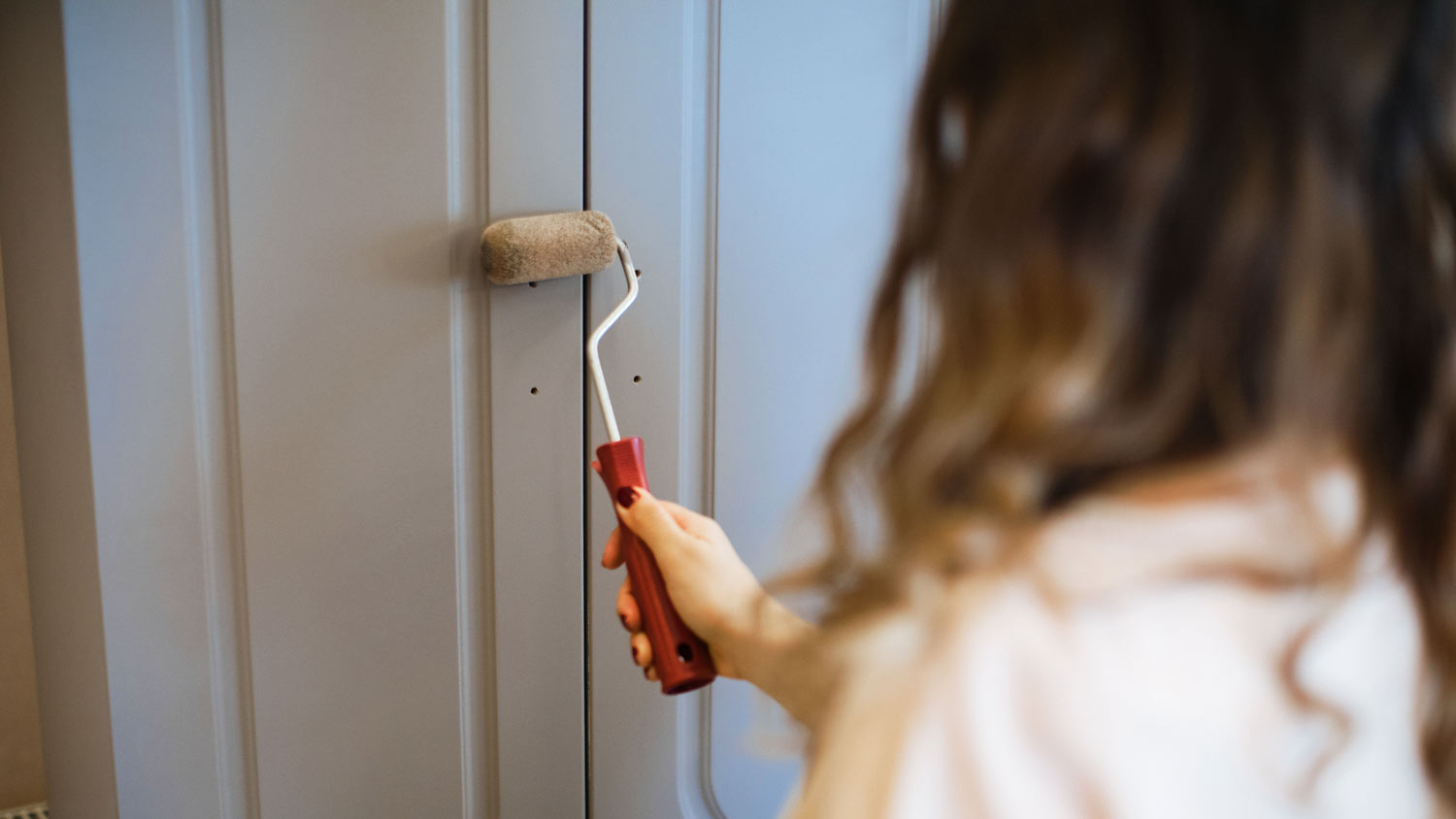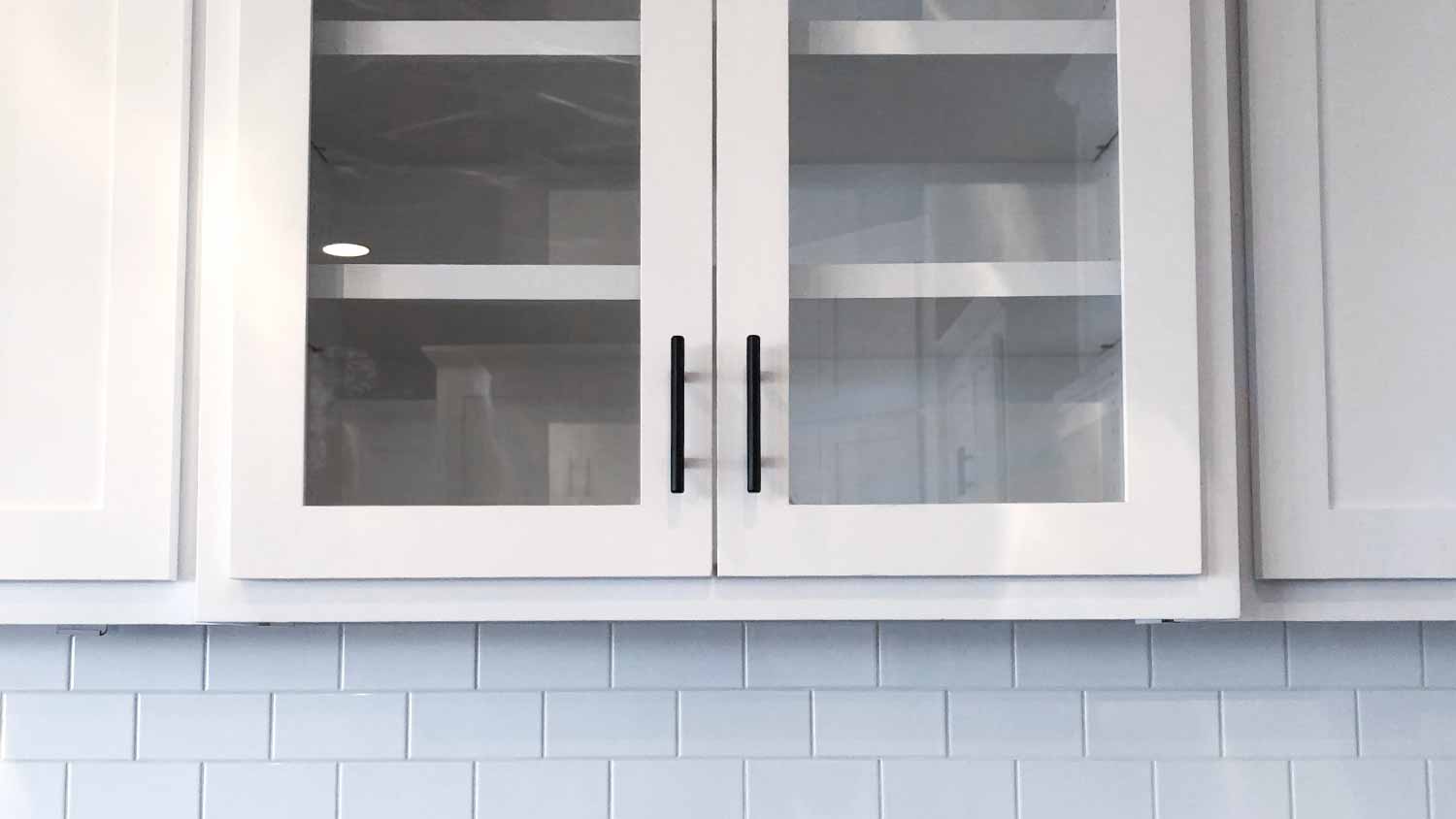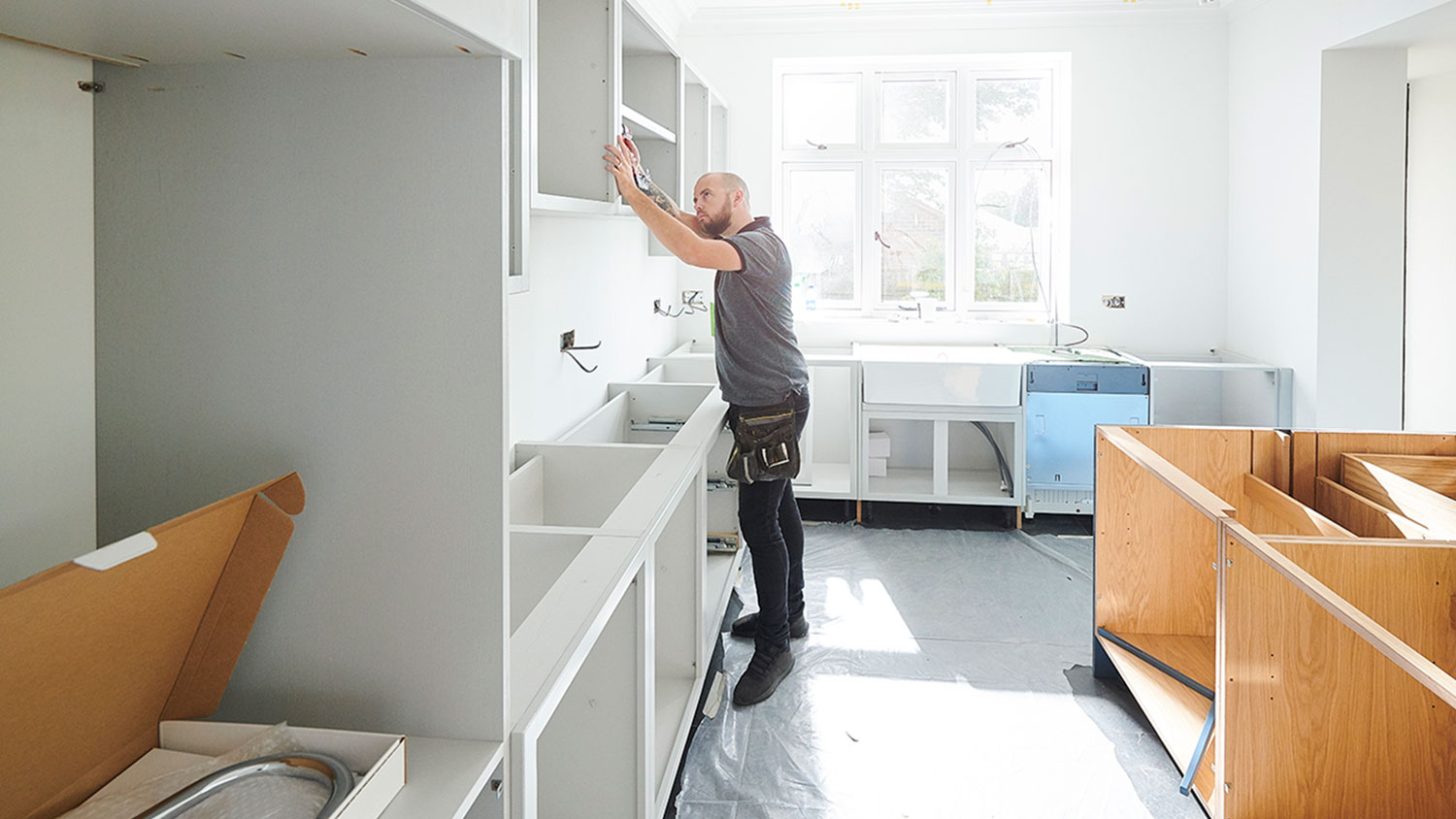
Discover the cost to paint kitchen cabinets, including average prices, cost factors, and tips to help you budget and save on your next kitchen update.
To frame or not to frame—we have your cabinet answers


Framed cabinets have frames onto which doors and drawers are attached.
With frameless cabinets, doors and drawers attach directly to the cabinet box.
Framed cabinets are durable and have a traditional look.
Frameless cabinets look sleek and excel at maximizing space.
If new cabinets are in your future, one of the most important decisions you’ll need to make is between styles. And we’re not talking about color, wood species, or handles: We mean framed vs. frameless. That choice will determine how your cabinets look, install, and even function over time. Our guide is here to help you find out exactly which kitchen cabinet type is best for your house. It’s a contest between form and function, and we’ve got everything you need to know.
Framed cabinets have a traditional look, and they’re a great option for showing off hardwoods with a variety of inset options. The face frame on a cabinet gives it extra stability and durability that can be very valuable in a busy kitchen.
Frameless cabinets have a sleek, seamless appearance. And because they don’t have face frames, their openings are wider, which makes it easier to reach into the interiors.
| Framed | Frameless |
|---|---|
| Classic | Modern |
| Sturdy | Sleek |
| Affordable | More expensive |
| Lose some space | Space efficient |
| Complex install | Simpler install |

Framed cabinets, also called face frame or American cabinets, are installed with a thick frame on the front. This frame is made from vertical stiles and horizontal rails. The cabinet doors and drawers are then installed onto the face frame.
Framed cabinets can be either full or partial overlay, which means the frame is either completely covered by the doors and drawers or a portion of the frame remains visible when the cabinets are closed.
| Pros | Cons |
|---|---|
| Classic, traditional style | Not a great match for contemporary kitchens |
| Sturdy | Frames block out valuable space |
| More affordable |
Best for:
A traditional look
Cabinets that see lots of use and need to last
Showing off certain types of hardwood
Adding a face frame makes a cabinet sturdier and less likely to warp over time (or during shipping). They’re less reliant on wall supports during installation as a result. Framed cabinets offer a traditional look and are a great way to show off rich woods.
Face frames are somewhat bulky and can limit space, especially in larger cabinets when a center stile may be used in the face frame. As a result, it can be harder to fit certain objects inside—the dreaded stuck kitchen drawer is often caused by something jamming against the face frame. In addition, some people think that framed cabinets look busy and dated. They don’t fit well with contemporary kitchen designs.

Frameless cabinets do not have a face frame on the front of the cabinet. Instead, their doors and drawers are flush with the edges of the cabinet box. Door hinges and drawer runners attach directly to the cabinet box. Without a face frame, these cabinets are more spacious and easier to reach into.
Frameless cabinets offer an overall streamlined, contemporary appearance. Intricate woodwork and styled paneling are less common (although still possible to find).
| Pros | Cons |
|---|---|
| Sleek, contemporary design | Often more expensive |
| Creates extra space | Not as durable |
| Straightforward installation |
Best for:
Modern kitchens
Maximizing usable space
These sleek cabinets skip the face frame and maximize space. They make it easier to fit larger pots and pans in cabinets while cutting down on jammed drawers. Most frameless cabinets have concealed hinges, adding to the overall streamlined look.
Installation requirements are stricter for frameless cabinets, which often means options are more limited. And they lack the durability that a face frame adds. They don’t weather the hard knocks of daily use or time quite as well, although high-quality modern versions of frameless cabinets have made significant improvements here. Still, you may still have to occasionally adjust the doors and drawers.
With the pros and cons discussed, let’s pit these two cabinet types against each other and see how they would fare in your kitchen. If you still can’t decide, a custom cabinet maker near you can help you weigh your options.
Face frame cabinets have a traditional look that’s perfect for a rustic-style kitchen. They tend to favor more complex designs and make a good base for custom woodwork. Frameless cabinets offer a contemporary, minimalist look that’s less busy. Ultimately, it’s a matter of taste and what style your kitchen already embraces.
Without a face frame, frameless cabinets provide access to more space. Managing full drawers or large pots and pans is less of a hassle, which is a boon in kitchens with limited space.
The simple design of frameless cabinets and availability of low-cost materials can often help keep costs low. But assuming the materials and design choices are equal, face frame cabinets are typically less expensive. Because the boxes are constructed differently, face frame cabinets cost an average of $500 less per cabinet than frameless.
Older, cheaper frameless cabinets sometimes created difficulties with their wall-focused installation and need for stronger anchor points. Today’s frameless cabinets have largely solved that problem, and installation can be especially speedy without the need to deal with face frames. Professional installation costs for both types are about the same.
An exterior face frame helps the cabinet box weather the knocks and slams of daily use without as much danger of damage or box warping. While frameless cabinets typically use stronger box materials to support cabinet weight, they may need adjustments as years pass, and they don’t handle uneven or warped walls as well.
The average cost to install kitchen cabinets is $6,200, but it usually ranges from $2,000 to $10,825, depending on the type of cabinets and the size of your project. Pre-made cabinets cost between $100 and $300 per linear foot, while custom cabinets cost between $13,000 and $30,000 to install. Your material choices and the job's complexity can affect the cost of installing kitchen cabinets, so make sure to take that into account as well.
Installing cabinets is a big job that requires leveling, cutting, and hanging cabinets from studs. It’s certainly not a beginner job, but if you have plenty of experience and own the tools, you can DIY your kitchen cabinet installation. Labor for cabinet installation can cost between $50 and $150 per linear foot, so you can expect to save some money if you choose to DIY, but installing cabinets is time-consuming, and you’ll likely need a helper for at least part of the project. In most cases, it’s worth it to hire a local cabinet installer.
From average costs to expert advice, get all the answers you need to get your job done.

Discover the cost to paint kitchen cabinets, including average prices, cost factors, and tips to help you budget and save on your next kitchen update.

Choosing new cabinet hardware is a fun balance of practicality and design. Costs range between under $100 and up to five figures, though, so budgeting and knowing which materials you can afford is key. This cost guide breaks it all down.

Discover cabinet installation cost estimates, including average prices, key cost factors, and tips to save on your new kitchen or bathroom cabinets.

Any handy homeowner can tackle their own cabinet drawer replacement. Check out this helpful guide if you need to replace your cabinet drawers.

Installing cabinet doors is a simple DIY project that can enhance your living space. Learn how to install cabinet doors with this step-by-step guide.

Hanging a cabinet without a stud is possible, but you’ll be limited in its weight capacity. Learn how to hang a cabinet without a stud.